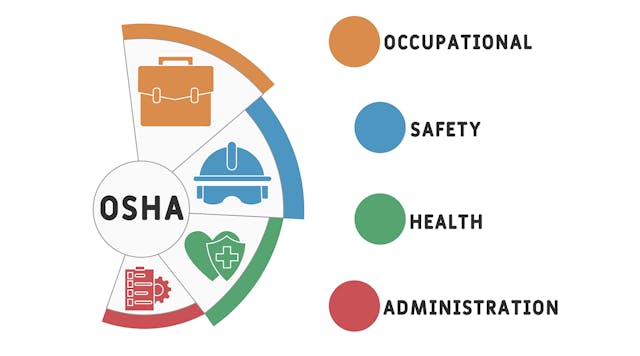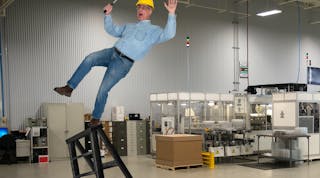ANALYSIS/COMMENTARY
The Occupational Safety and Health Administration (OSHA) has proposed a new rulemaking that would alter its personal protective equipment (PPE) standards for the construction industry with the declared goal of ensuring a better fit for individual employees. But by the agency’s own admission, the current standards already in place seem to render the new proposal unneeded.
The changing demographics of the construction industry workforce are what is driving this change. In fact, it would not be unfair to suggest that the entire exercise is simply a gesture seeking to bolster the Biden administration’s repeated public expressions of commitment to advancing the interests of women and minorities.
“A more inclusive workforce (especially with women and smaller employees) means that some PPE in use will become inadequate for many employees. PPE sometimes comes in limited size options or ‘one size fits all’ that only properly fit the middle 95% of employees,” explain attorneys Adam Young, James Curtis and Craig Simonsen of the Seyfarth Shaw law firm.
In its publication of rule proposal, OSHA states, “The failure of standard-sized PPE to protect physically smaller construction workers properly, as well as problems with access to properly fitting PPE, have long been safety and health concerns in the construction industry, especially for some women. The proposed rule clarifies the existing requirement, and OSHA does not expect the change will increase employers’ costs or compliance burdens.”
(Which prompts the question: Why didn’t the agency simply choose to issue a guidance designed to clarify the language of the current standard instead of a new rule?)
When announcing the proposed rule, OSHA Chief Doug Parker observed that “if personal protective equipment does not fit properly, an employee may be unprotected or dangerously exposed to hazards and face tragic consequences. PPE must fit properly to provide adequate protection to employees. Improperly fitting PPE may fail to provide any protection to an employee, present additional hazards, or discourage employees from using such equipment in the workplace.”
The agency also stressed that the proposed revision would help to align the language in OSHA’s PPE standard for construction workers with the standards that already are in place for general industry and maritime workers. In place for many years, those standards already explicitly require PPEs to fit wearers properly.
The construction standards, unlike the maritime and general industry standards, are not worded in such a way as to specify that PPE must fit properly. Instead, they require that PPE provide adequate protection to employees, explain attorneys John Surma and Savannah Selvaggio of the law firm of Ogletree Deakins.
However, in the rulemaking proposal OSHA went so far as to admit that this proposed requirement already corresponds with the current obligation that employers make sure PPE fits properly. “PPE must fit properly in order to provide adequate protection to employees,” the agency said.
Final Rule May Not Happen
While waiting for the rulemaking process to play out, which could take many months, the Seyfarth Shaw attorneys recommend that employers in the construction industry should take proactive steps to prepare. They say this is especially true because construction industry employers already can be cited for ignoring this issue under the OSHA General Duty clause even if specific regulations are not yet in place.
When these new standards were first broached earlier in discussions of the Advisory Committee on Construction Safety and Health, the construction industry expressed concern that the proposed rule could place a requirement that an employee’s PPE fit properly but does not provide an explanation for how the words “properly fitting” PPE will be defined.
“This gap in clarification would create significant opportunity for employees to complain about whether provided PPE ‘properly fit’ them if the PPE was simply uncomfortable,” point out attorneys Surma and Selvaggio.
OSHA’s response to this concern was to state that in the agency’s experience, “employers in general industry have had no issue understanding the phrase ‘properly fits’ with regard to PPE.” But this response would not appear to obviate the need for a definition for whether PPE “properly fits,” the agency believes.
“The language of this proposed rule will make the requirement for properly fitting PPE clear and increase awareness of employers’ obligations when choosing and evaluating PPE for their workers.”
In the rulemaking proposal, OSHA also included examples of ill-fitting protective clothing and equipment used by construction workers based on the first category of PPE when gloves are ill-fitting, goggles don’t fit, or the legs of protective garments are so long that they could cause tripping hazards and impact others working near the worker with improperly fitting PPE.
“The agency believes that providing clear and explicit language in the construction standard on PPE fit will help ensure employers provide employees with properly fitting PPE, thereby ensuring protection for employees exposed to workplace hazards,” it said in the proposed rule.
OSHA’s preliminary economic analysis holds that the proposed change of rules is not an “economically significant regulatory action” that will “impose new costs on employers,” as the rule would not change but instead clarifies the requirement to provide properly fitting PPE. “The preliminary economic analysis appears to recognize that not all employers have complied with that requirement relative to the way PPE fits users,” Surma and Selvaggio note.
In addition, OSHA’s rulemaking notice goes so far as to provide some delineation between employer-provided PPE that is considered to have a “universal fit,” making it “completely adjustable and capable of fitting any person,” and employer-provided PPE that does not have a “universal fit” and therefore would likely be at the center of potential fit concerns.
The proposed rule’s 60-day period public for gathering comments came to an end on Sept. 18. “Depending on the feedback received during the comment period, OSHA may change course and not pursue such a rule,” Surma and Selvaggio believe. If OSHA proceeds, there are several steps in the process of altering an OSHA standard that will result in a delay of at least six months before the agency actually can alter the current standard.





































































